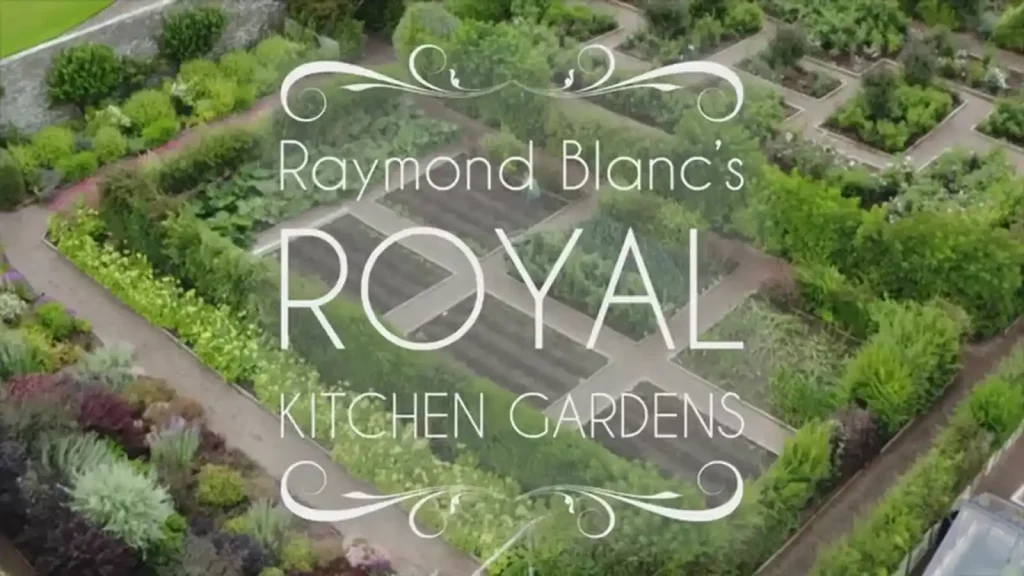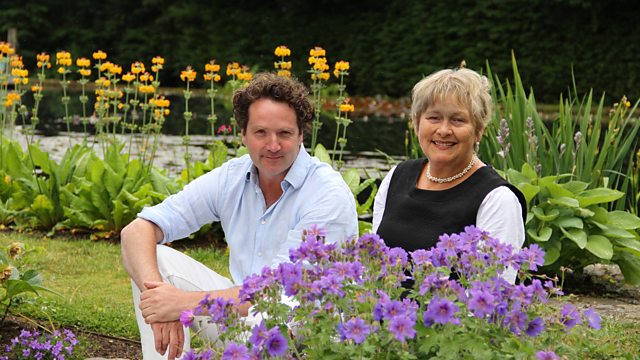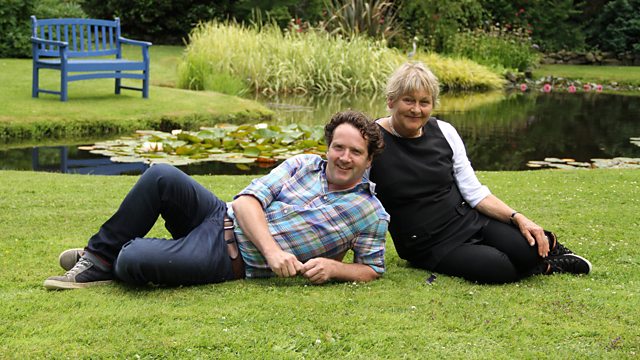Raymond Blanc’s Royal Kitchen Gardens episode 7: In episode seven of Raymond Blanc’s “Royal Kitchen Gardens,” the spotlight shines on the Castle of Mey, majestically perched atop the rugged cliffs overlooking the Pentland Firth. Constructed in 1573, this historic castle not only boasts breathtaking views but also holds a special place in royal hearts, being a beloved retreat of the Queen Mother. Today, Raymond explores the ongoing efforts of King Charles to preserve and enhance his grandmother’s horticultural legacy.
This episode delves into the unique flora cultivated in the harsh climate of northern Scotland, where the resilient gardens produce an astonishing variety of fruits. Amidst this scenic backdrop, Raymond Blanc, an acclaimed chef and culinary author, showcases his skills by preparing a sumptuous dish that marries local flavors with royal tradition—a barbecued langoustine dressed in a rich paprika butter.
“Royal Kitchen Gardens” offers viewers an extraordinary journey through some of the UK’s most storied and splendid royal gardens. Each episode, guided by Raymond Blanc’s expert insights and passion for gastronomy, provides a behind-the-scenes look at the luxurious landscapes that supply the royal kitchens. From the aromatic apple tunnels at Highgrove to the ocean-inspired gardens at the Castle of Mey, Blanc promises a culinary tour that’s as educational as it is enchanting.
As Raymond Blanc wanders the expansive grounds of the Castle of Mey, viewers gain an intimate glimpse into the royal family’s private relationship with these landscapes. The series carefully documents the meticulous care and strategic planning involved in maintaining the vitality of these gardens, which are both a personal sanctuary and a symbol of royal tradition.
In episode seven, particular attention is paid to the innovative gardening techniques adapted to the challenging climate of the Pentland Firth area. The resilience of local horticulture is evident in the variety of fruits thriving against the odds—a testament to the dedication of the gardeners and the rich biodiversity of Scotland. This episode not only highlights the horticultural achievements but also underscores the importance of these gardens in the broader context of ecological and heritage conservation efforts led by the royals.
Raymond’s culinary expertise takes center stage as he demonstrates how to prepare the barbecued langoustine, a local delicacy. His approach is meticulous and creative, ensuring that the natural flavors of the fresh seafood are enhanced but not overpowered by the smoky paprika butter. This segment not only showcases his skills but also his philosophy of cooking with respect for the ingredient’s origins and the environment.
Raymond Blanc’s Royal Kitchen Gardens episode 7
Throughout the series, “Royal Kitchen Gardens” intertwines the themes of culinary excellence and sustainable gardening. Each garden visited reveals different aspects of the royal family’s approach to food and conservation, from the organic practices at Highgrove to the wind-swept, sea-influenced plots at Castle of Mey. The series emphasizes how these green spaces serve not just the royal family, but also the communities around them, promoting biodiversity and sustainable living.
This journey with Raymond Blanc is not merely about viewing beautiful gardens or tasting exquisite dishes; it’s about understanding a deeper connection between land, royalty, and culture. It invites audiences to appreciate these spaces as living legacies that offer insights into the past and lessons for the future. The series challenges viewers to think about how they can incorporate elements of sustainable living and culinary excellence into their own lives, making “Royal Kitchen Gardens” a truly inspirational watch.
Join us for a unique exploration of heritage, horticulture, and high cuisine, where history and modern culinary techniques intertwine to celebrate the legacy and future of Britain’s royal gardens. Through meetings with gardeners who curate these living museums and chefs who bring their produce to life, Raymond Blanc brings the tastes and tales of these royal retreats right into your living room.
A Royal Culinary Journey: Raymond Blanc Explores Castle of May’s Kitchen Gardens
Introduction to Raymond Blanc’s Royal Kitchen Gardens Series
Imagine stepping into a world where culinary artistry meets royal heritage, where the whispers of centuries-old traditions blend with the sizzle of innovative gastronomy. This is the enchanting realm that acclaimed chef Raymond Blanc invites us to explore in his captivating new series, “Royal Kitchen Gardens.”
At the heart of this gastronomic adventure lies a passion for sustainable, seasonal food – a philosophy shared by both Blanc and His Majesty King Charles III. As we embark on this journey, we’ll discover how these two visionaries are cultivating a greener future, one carefully tended plot at a time.
The Castle of May: A Royal Retreat
Perched majestically on the rugged coastline of Caithness, Scotland, the Castle of May stands as a testament to both history and horticultural ingenuity. This 16th-century fortress, once a grand Georgian home, found its true calling as the beloved retreat of Her Majesty Queen Elizabeth the Queen Mother.
For five glorious decades, the castle’s walls echoed with royal laughter and the gentle rustle of garden leaves. Today, it continues to captivate visitors with its timeless charm and bountiful harvests. As we delve deeper into its story, we’ll uncover how this northernmost sanctuary became a crucible for culinary innovation.
Raymond Blanc’s Culinary Mission
Enter Raymond Blanc, a culinary virtuoso whose eyes sparkle with the same enthusiasm as a child in a candy store when he speaks of fresh, seasonal produce. His mission? To unearth the secrets of royal gardening and bring them to our tables.
With the precision of a master chef and the curiosity of an eager student, Blanc sets out to explore the Castle of May’s kitchen gardens. His journey is more than a mere exploration; it’s a pilgrimage to the very roots of sustainable cuisine. As he walks the paths once trodden by royalty, Blanc seeks to bridge the gap between past and present, tradition and innovation.
In this series, we’ll witness how Blanc’s culinary expertise intertwines with the castle’s rich heritage. From the windswept shores of Scotland to the sun-drenched fields of his own Le Manoir aux Quat’Saisons, Blanc will show us how the principles of royal gardening can transform our own culinary practices.
So, dear food lovers and garden enthusiasts, prepare to be whisked away on a journey that will tantalize your taste buds and nourish your soul. Through Raymond Blanc’s eyes, we’ll discover how the Castle of May’s kitchen gardens are not just a relic of the past, but a blueprint for a more sustainable, delicious future.
Unveiling the Treasures of Castle of May’s Gardens
The Walled Garden: A Sheltered Haven
Nestled within the rugged Scottish landscape, the Castle of May’s walled garden stands as a testament to horticultural ingenuity. This two-acre oasis, sheltered from the harsh coastal winds, is a cornucopia of culinary delights. As you step through its ancient gates, you’re immediately transported into a world where nature and nurture intertwine in perfect harmony.
The garden’s high walls, weathered by centuries of Scottish storms, create a microclimate that defies its northern latitude. Within this protected enclave, a staggering array of fruits and vegetables flourish. From crisp apples to juicy pears, from vibrant tomatoes to earthy root vegetables, the garden is a living, breathing pantry that would make any chef’s heart skip a beat.
Challenges and Triumphs of Northern Horticulture
Gardening in the far north of Scotland is not for the faint of heart. The Castle of May’s gardeners face a unique set of challenges that would send lesser horticulturists running for cover. Yet, it’s these very challenges that have sparked innovation and determination, turning the garden into a triumph of human perseverance over nature’s whims.
The short growing season and unpredictable weather patterns have forced the gardeners to become masters of adaptation. They’ve developed ingenious techniques to extend the growing season, such as using cold frames and carefully positioned windbreaks. Moreover, they’ve become experts in selecting and cultivating varieties that can thrive in this demanding environment. As a result, the garden produces an impressive bounty that rivals those of more temperate climes.
The Queen Mother’s Shell Garden
Hidden within the larger walled garden lies a gem that captures the heart of every visitor – the Queen Mother’s Shell Garden. This intimate space, a testament to royal whimsy and horticultural artistry, is as much a work of art as it is a garden. Here, the boundaries between nature and decoration blur, creating a truly enchanting experience.
At the heart of this garden are the roses, their delicate petals unfurling in a myriad of colors. These blooms, carefully selected for their hardiness and beauty, are a living tribute to the Queen Mother’s refined taste. But what truly sets this garden apart is its unique decorative element – seashells. Collected by the Queen Mother herself during her coastal walks, these shells add a touch of seaside magic to the flowerbeds.
The Shell Garden is more than just a pretty space; it’s a sensory experience. The fragrance of the roses mingles with the salty sea air, creating a perfume that’s uniquely Scottish. The carefully placed benches invite visitors to sit, breathe, and immerse themselves in the garden’s tranquility. It’s easy to imagine the Queen Mother herself, finding solace and joy in this special corner of her beloved Castle of May.
From Garden to Table: Culinary Delights at Castle of May
Scottish Seafood Showcase
Picture yourself standing on the windswept shores of Caithness, where the North Sea meets the Atlantic Ocean. This dramatic coastline isn’t just a feast for the eyes; it’s also the source of some of Scotland’s most prized culinary treasures. At Castle of May, the bounty of the sea takes center stage in a spectacular seafood showcase that would make any food lover’s heart skip a beat.
Raymond Blanc, with his keen chef’s eye, recognizes the unparalleled quality of the local catch. From succulent langoustines to plump scallops, the waters around Castle of May offer a veritable underwater pantry. But it’s not just about the ingredients; it’s about the connection between the land, the sea, and the people who harvest its riches. As Raymond chats with local fishermen, their passion for their craft becomes evident, adding a human touch to every morsel that graces the plate.
Traditional Scottish Flavors
Step into the castle’s charming 1950s kitchen, and you’re transported back in time to an era when simplicity and flavor reigned supreme. Here, Castle chef Martin Duffy keeps the flame of traditional Scottish cuisine burning bright. His renditions of classic dishes are like edible history lessons, each bite telling a story of Scotland’s culinary heritage.
Take, for instance, the humble cheese scone. In Martin’s capable hands, this staple becomes a work of art. The scones emerge from the oven golden and fragrant, their aroma filling the kitchen with promises of comfort and warmth. But the real star of the show is the Cullen skink. This creamy fish soup, originating from the town of Cullen on the northeast coast, is Scotland in a bowl. With each spoonful, you taste the smokiness of haddock, the earthiness of potatoes, and the subtle sweetness of onions – a perfect harmony of land and sea.
The Royal Peach: A Surprising Northern Delicacy
In a twist that would surprise even the most seasoned gardeners, Castle of May harbors a secret that seems to defy nature itself – peach trees. These delicate fruits, more commonly associated with warmer climes, have found an unlikely home in the Scottish Highlands. It’s a testament to the skill and determination of the castle’s gardeners, who have created a microclimate that allows these sun-loving fruits to thrive.
Raymond’s eyes light up at the sight of these blushing beauties. With the reverence of a connoisseur handling a rare vintage, he selects a perfectly ripe peach. The fruit’s fragrance fills the air, a promise of summer sweetness. Inspired by this unexpected treasure, Raymond crafts a dessert that marries the peach’s natural lusciousness with subtle florals and citrus notes. His baked peaches with lavender and orange become more than just a dessert; they’re a celebration of nature’s resilience and human ingenuity.
As the aroma of baking peaches wafts through the castle, it’s clear that this dish is more than the sum of its parts. It’s a bridge between the traditional and the innovative, a perfect encapsulation of Castle of May’s unique blend of history and modernity. With each bite, diners are treated to a taste of royal luxury, seasoned with a touch of Scottish magic.
F.A.Q. Raymond Blanc’s Royal Kitchen Gardens episode 7
Q.: What is the significance of the Castle of Mey in Raymond Blanc’s “Royal Kitchen Gardens” series?
A.: The Castle of Mey holds a prominent place in episode seven of “Royal Kitchen Gardens” due to its historical significance and the royal gardening efforts it houses. Constructed in 1573 and a favored residence of the Queen Mother, the castle showcases ongoing efforts by King Charles to uphold his grandmother’s horticultural legacy, making it a key location for exploring the intersection of royal history and sustainable gardening practices.
Q.: How does the Castle of Mey’s location influence its gardening practices?
A.: Located on the windswept coastline of the Pentland Firth in northern Scotland, the Castle of Mey faces unique climatic challenges that have inspired innovative gardening techniques. These adaptations allow a surprising variety of fruits to thrive in a harsh environment, highlighting the resilience and ingenuity of local horticultural practices.
Q.: What culinary specialties does Raymond Blanc focus on in this episode?
A.: In this episode, Raymond Blanc emphasizes local Scottish flavors by preparing a barbecued langoustine with paprika butter. This dish reflects the rich culinary heritage of the region and showcases how local ingredients can be transformed into high cuisine, underlining Blanc’s commitment to cooking with seasonal and regional produce.
Q.: What broader themes are explored in the “Royal Kitchen Gardens” series?
A.: The series explores themes of culinary excellence, sustainable gardening, and the deep connections between land, royalty, and culture. Each episode reveals how these royal gardens are not only a source of ingredients for royal kitchens but also play a significant role in community sustainability and biodiversity.
Q.: How does the series highlight the importance of these gardens to the royal family and the public?
A.: “Royal Kitchen Gardens” delves into how these gardens serve as both personal sanctuaries for the royal family and vibrant ecosystems that contribute to local biodiversity and ecological conservation. The series provides an intimate look at the strategic care and meticulous planning involved in maintaining these gardens, emphasizing their importance as living legacies that offer insights into sustainable living and culinary heritage.
Conclusion: The Legacy of Royal Kitchen Gardens
The Importance of Sustainable and Seasonal Produce
As we reflect on the rich tapestry of flavors and traditions woven throughout Castle of May’s kitchen gardens, one truth stands out: sustainability isn’t just a modern buzzword, it’s a royal legacy. The commitment to seasonal, locally-grown produce isn’t merely a culinary preference; it’s a philosophy that has stood the test of time.
From the carefully tended plots to the innovative growing techniques, every aspect of the castle’s gardens echoes this commitment. It’s a testament to the foresight of the royal family, particularly King Charles III, who has long championed environmental causes. Their dedication to sustainable practices serves as an inspiration, proving that even in the most challenging climates, with care and innovation, we can cultivate a bounty that nourishes both body and soul.
Moreover, this royal example ripples far beyond the castle walls. It influences British culinary culture at large, encouraging a return to seasonal eating and an appreciation for the rhythms of nature. As consumers become more conscious of their food choices, the Castle of May stands as a shining example of how tradition and innovation can work hand in hand to create a more sustainable future.
Raymond Blanc’s Takeaways from Castle of May
For Raymond Blanc, the journey through Castle of May’s kitchen gardens was more than just a culinary adventure; it was a masterclass in sustainable gastronomy. As he wandered through the walled gardens and sampled the fruits of the gardeners’ labor, Blanc’s eyes were opened to new possibilities and age-old wisdom.
One of the key lessons Blanc took away was the importance of working in harmony with nature, rather than against it. The castle’s gardeners demonstrated how, even in the harsh Scottish climate, a diverse array of produce could thrive with the right care and attention. This principle of adapting to and embracing local conditions is something Blanc is eager to incorporate into his own culinary practices.
Another powerful takeaway was the deep connection between garden, kitchen, and table. At Castle of May, the journey from soil to plate is measured in meters, not miles. This proximity not only ensures the freshest possible ingredients but also fosters a profound respect for the food and the effort that goes into producing it. Blanc was struck by how this closeness to the source of ingredients elevated every dish, infusing it with a sense of place and purpose.
As Blanc prepares to return to his own kitchens, he carries with him not just recipes and techniques, but a renewed appreciation for the art of sustainable cooking. He’s inspired to deepen his own connection to local producers, to experiment with forgotten varieties, and to continue championing the cause of seasonal, sustainable cuisine.
The legacy of Castle of May’s kitchen gardens, therefore, extends far beyond its stone walls. Through the eyes and experiences of chefs like Raymond Blanc, it serves as a beacon of inspiration for food lovers and culinary professionals worldwide. It reminds us that true luxury in dining isn’t about exotic ingredients or complicated techniques, but about honoring the bounty of the land and the wisdom of generations.
In the end, the story of Castle of May’s kitchen gardens is a story of continuity and change, of tradition and innovation. It’s a living example of how we can honor our culinary heritage while adapting to the needs of the present and the challenges of the future. As we face growing concerns about food security and environmental sustainability, the lessons learned from this royal retreat offer a tantalizing glimpse of a more sustainable, delicious future for us all.




